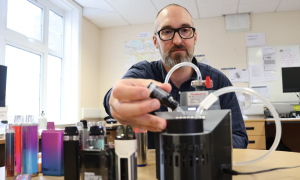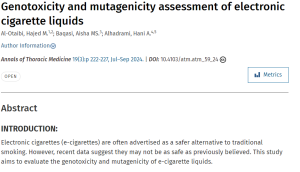Toxicology has given us an objective way to appraise the health risks of e-cigarettes, says NUS Associate Professor Ho Han Kiat.

SINGAPORE: Since its implementation in 2018, there has been debate about the effectiveness of Singapore’s ban on vapes, and if more must be done to deter youths from vaping.
The Health Sciences Authority on May 8 said that it is reviewing penalties to tackle the advertising, importation and distribution of vapes, and highlighted efforts to promote “pro-health” content, such as a vape-free campaign targeted at youths.
Singapore is among 39 countries worldwide that have banned vapes, in contrast to 82 countries that regulate the sale and distribution of e-cigarettes.
In discussions surrounding Singapore’s vaping ban, some have questioned if this approach is overly cautious. Countries such as New Zealand and the United Kingdom take the stance that vaping poses fewer harms than smoking cigarettes and can help smokers quit.
KNOWN HAZARDOUS SUBSTANCES IN VAPES
Much like conventional cigarettes, e-cigarettes contain thousands of chemicals. There are several well-established classes of hazardous substances in vapes, including heavy metals, polyaromatic hydrocarbons (found in coal and fossil fuels) and fine particulate matter.
Heavy metals such as arsenic, cadmium and chromium are linked to cancer. Cadmium, found commonly in batteries, can damage the airway, resulting in respiratory difficulty.
Polyaromatic hydrocarbons belong in one of the best studied groups of substances that we call procarcinogens. Procarcinogens don’t harm us immediately at the point of inhalation, but can be metabolised by our bodies and converted into carcinogens, which are substances that can cause cancer.
Fine particulate matter, when inhaled, can travel all the way into the lungs’ air sacs where gas exchange takes place.
What this means is that every puff on a vape – just like every puff on a cigarette – transports substances into your body that could cause health problems. As these particles are difficult for the body to break down, their presence triggers a continuous but futile response from the body to get rid of them. This can result in excessive phlegm production, and chronic inflammation of the respiratory tract.
Source: Channel News Asia










